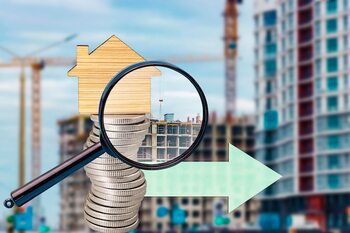The importance of ecological planning in real estate value.

Ecological planning has become a determining factor in real estate value, especially in a country like Costa Rica, where nature is an integral part of our identity. As buyers and investors prioritize sustainable and environmentally friendly properties, the demand for well-planned and ecologically responsible land skyrockets. This article explores how ecological planning not only protects our environment but also increases property value, ensuring a solid and meaningful investment.
1. What is ecological planning and why is it relevant today?
Ecological planning refers to the conscious and strategic approach that seeks to integrate human needs with environmental conservation. This process involves the assessment of natural resources, biodiversity, and sustainable land use to ensure that urban development does not compromise the integrity of ecosystems. In a world where the effects of climate change are increasingly evident, this practice becomes essential not only to protect the natural environment but also to create livable spaces that promote a healthy and balanced lifestyle. Ecological planning encourages the creation of sustainable cities, where access to green areas is prioritized and the ecological footprint is minimized.
The relevance of ecological planning today lies in its ability to respond to the growing concerns about the environmental impact of urban development. Consumers are increasingly aware of their role in preserving the planet and actively seek properties that reflect these values. By considering factors such as energy efficiency, proper water management, and conservation of green spaces, buyers are not only investing in real estate but also in a more sustainable future. This trend has led to a significant appreciation of properties that meet ecological criteria, making ecological planning a fundamental pillar for those looking to secure solid real estate investments aligned with contemporary expectations.
2. Impact of sustainability on buyer perception.
Sustainability has shifted from being a trend to becoming a key factor in consumers' purchasing decisions. Today's buyers are more informed and more aware of the environmental impact of their choices, leading to a growing demand for properties that integrate eco-friendly practices. Elements such as renewable energy systems, water efficiency, and the use of recycled materials are not only valued but are considered essential. This transformation in buyer perception means that properties that do not incorporate these features may be displaced in the market, negatively affecting their value.
Moreover, sustainability is redefining expectations of what constitutes an ideal home. The connection with nature and access to green spaces are increasingly valued among buyers, who seek not only a place to live but also an environment that promotes a healthy and balanced lifestyle. This implies that urban areas must adopt eco-friendly planning strategies to create more livable and appealing communities. Thus, well-designed properties based on sustainable principles not only generate greater economic appreciation but also foster a sense of community and well-being among their residents.
3. How green areas increase the value of a property.
Green areas play a crucial role in the valuation of a property, as they not only enhance the aesthetics of the environment but also provide numerous environmental and social benefits. The presence of gardens, parks, and natural spaces in a community can significantly increase the appeal to potential buyers. These spaces not only offer a place for recreation and leisure but also promote a healthy lifestyle by encouraging outdoor activities. This translates into a higher demand for properties near these green areas, thereby elevating their value in the real estate market.
In addition, green areas contribute to the environmental sustainability of a property. They act as urban lungs, improving air quality and regulating local temperatures through shade and evapotranspiration. These features are highly valued by those looking to invest in a home that is not only aesthetically pleasing but also sustainable in the long term. Therefore, properties surrounded by well-planned nature often have higher prices due to their ability to offer a healthy and balanced environment, which is increasingly important for environmentally conscious buyers.
4. Successful real estate projects that incorporate ecological elements.
Real estate projects that integrate ecological elements are proving to be successful examples of how sustainability can increase property value. A clear example is the implementation of rainwater harvesting systems and solar energy in residential developments, which not only reduces operational costs for residents but also promotes a more environmentally conscious lifestyle. These ecological elements not only contribute to the home's energy efficiency but also become key attractions for buyers seeking a smaller environmental footprint and greater comfort.
Another notable case is the development of communities that preserve green spaces and promote local biodiversity. Projects designed with natural parks, walking trails, and community spaces intended for urban agriculture are gaining popularity among new generations of buyers. They not only improve quality of life by providing access to natural environments but also enhance the neighborhood's appeal due to their commitment to sustainable practices. This has led to an increase in the value of these properties, making them even more attractive investments within the Costa Rican real estate market.
5. The relationship between biodiversity and land value increase.
The relationship between biodiversity and land value is a fundamental aspect of ecological planning. Lands that integrate natural elements, such as green areas, biological corridors, and diverse ecosystems, not only provide an attractive environment for residents but also promote a higher quality of life. Properties located in areas with high biodiversity tend to have greater demand due to the advantages these characteristics offer, such as access to recreational spaces and the possibility of enjoying a healthy environment. Therefore, the preservation of biodiversity directly translates into an increase in real estate value by attracting buyers interested in living in harmony with nature.
Additionally, having environments rich in biodiversity can be a differentiating factor in the real estate market. Developments that incorporate ecological and sustainable practices not only meet current environmental expectations but are also seen as safer long-term investments. The presence of native flora and fauna enhances aesthetics and the urban landscape, which is highly valued by potential buyers and investors. By protecting these natural resources and promoting their integration within urban planning, it ensures not only the conservation of environmental heritage but also the continuous increase in the value of the involved land.
6. Government incentives for sustainable developments in Costa Rica.
Government incentives for sustainable developments in Costa Rica play a crucial role in promoting projects that respect and preserve the environment. The government has implemented various policies and programs that encourage investment in ecological initiatives, such as tax exemptions, subsidies, and preferential financing for developers who meet sustainability criteria. These benefits not only reduce the initial costs of projects but also stimulate investors to prioritize responsible practices, resulting in an increase in property values over the long term. Additionally, collaboration between government entities and private companies has enabled the development of clear standards for sustainable construction. This includes regulations on the efficient use of resources, proper waste management, and the protection of green areas. Developers who comply with these regulations not only access financial incentives but also enhance their reputation in the real estate market. In this context, the government's commitment to sustainability becomes a competitive advantage that benefits both investors and buyers who are aware of the environmental impact of their decisions.
7. Global trends in ecological urban planning.
Ecological urban planning is constantly evolving, driven by the need to create spaces that are not only livable but also sustainable. Globally, smart cities are being developed that integrate technology and nature to optimize resource use and minimize environmental impact. These trends include the creation of green corridors, the implementation of efficient public transport systems, and a focus on constructing buildings with environmental certifications. This movement towards more ecological urbanization not only improves the quality of life of its inhabitants but also increases the appeal and commercial value of properties within these areas.
Moreover, initiatives to promote resilient communities in the face of climate change are gaining ground in many cities around the world. This involves not only protecting existing ecosystems but also restoring those that have been degraded. Ecological urban planning considers factors such as efficient water management, reducing energy consumption, and promoting the use of renewable energy. By integrating these principles into their urban development, cities not only protect their natural environment but also attract buyers and investors interested in properties that reflect a commitment to sustainability and community well-being. This trend highlights how good ecological planning can directly translate into a significant increase in real estate value.
8. Practical cases: properties that have increased their value through green strategies.
The implementation of green strategies in the design and development of properties has proven to be a key factor in increasing real estate value. Successful cases around the world, including some in Costa Rica, show how the incorporation of sustainable technologies, such as solar panels, rainwater harvesting systems, and eco-friendly materials, not only reduces long-term operating costs but also attracts an increasingly environmentally conscious market. These properties not only meet ecological standards but also become models of energy efficiency and sustainability, giving them a competitive advantage in the market.
Moreover, properties located in well-preserved natural environments have experienced a notable increase in their value thanks to ecological planning. Investments in green areas, pedestrian pathways, and community spaces promote a healthy lifestyle in harmony with nature, which is highly valued by current buyers. In communities where the conservation of the local ecosystem has been prioritized and the responsible use of natural resources has been promoted, there has been not only an increase in real estate demand but also a significant appreciation in property values. This demonstrates that green strategies are not merely a passing trend; they are a smart investment that can transform both the environment and the local economy.
9. The role of local communities in ecological planning projects.
Local communities play a crucial role in ecological planning projects, as they are the most affected by decisions made regarding land use and environmental conservation. Their deep knowledge of the natural environment and available resources allows for more effective planning tailored to the specific needs of each area. Involving local residents in the decision-making process fosters a sense of belonging and identity that strengthens the commitment to sustainability. This not only ensures that projects are viable but also promotes their acceptance and long-term success.
Additionally, local communities can act as guardians of the environment, offering valuable perspectives on how to balance real estate development with ecological conservation. By actively participating in planning, they can advocate for practices that minimize environmental impact and highlight the unique features of their region. This not only helps protect local ecosystems but also increases the appeal of properties for future buyers and investors interested in a sustainable lifestyle. Ultimately, recognizing and empowering local communities strengthens ecological planning and contributes to the increase in real estate value by creating attractive and resilient environments.
10. Future of the real estate market: towards a more conscious and responsible construction.
The future of the real estate market is shaping up towards more conscious and responsible construction, where sustainability is not just a trend, but an urgent necessity. As concerns about climate change and environmental degradation grow, developers and investors are recognizing the importance of integrating eco-friendly practices into their projects. This includes the use of sustainable materials, energy-efficient technologies, and designs that respect and preserve the natural environment. The adoption of these approaches not only benefits the planet but also attracts a growing segment of buyers looking for properties aligned with their values.
Moreover, this transformation towards a more sustainable real estate market has direct implications for property values. Homes and developments that incorporate ecological elements tend to maintain or even increase their appreciation over time, as consumers are willing to pay more for features that promote a healthy and responsible lifestyle. This shift not only reflects an evolution in buyer preferences but also a revaluation of urban and rural space that prioritizes quality of life. In this context, ecological planning becomes a fundamental pillar for building resilient and prosperous communities, shaping a future where harmony between humans and their environment is possible.



